October 14, 2022
Last month, the National Association of City Transportation Officials (NACTO) held its 2022 Designing Cities conference in the cities of Boston, Somerville, and Cambridge, MA. For industry experts and transportation officials, the conference offers an annual opportunity to gather and swap trade insights while collectively benefitting from the guidance of NACTO, itself a preeminent authority in modally inclusive urban street design.
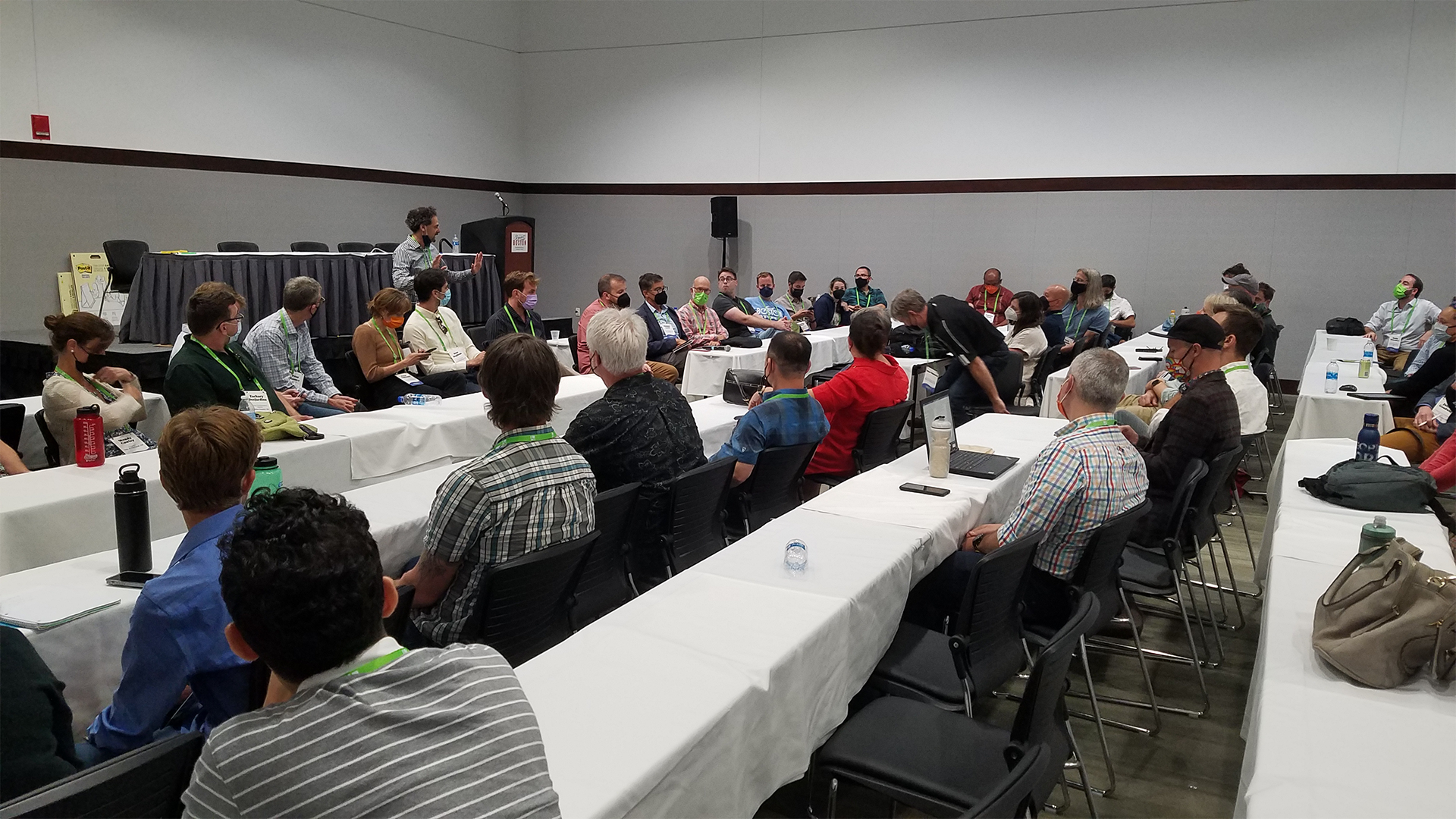
Attendees sitting in on a presentation at NACTO's 2022 Designing Cities conference.
While the COVID-19 pandemic required NACTO to reschedule its 2020 and 2021 conferences, Designing Cities returned in force this year, offering attendees its signature mixture of discourse, workshops, and “walkshops,” which send attendees out into the field to learn from noteworthy treatments in the host cities’ transportation networks.
Conferences like NACTO’s Designing Cities can function as helpful barometers for understanding the questions, trends, and values at the forefront of our industry. For this reason, we wanted to take a moment to unpack three major themes that stood out to us throughout the conference’s four-day programming.
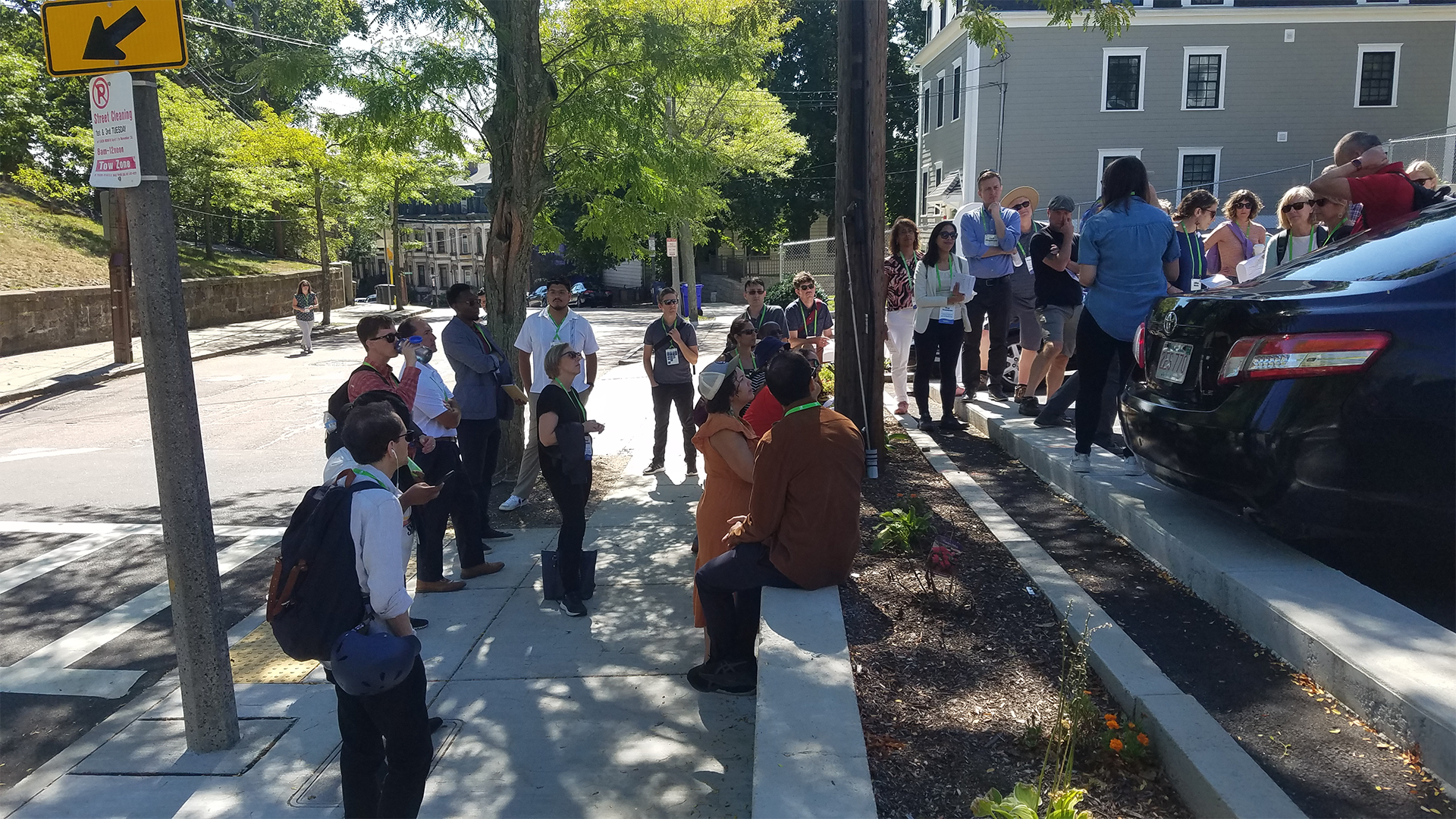
"Walkshops" make case studies of conference host cities.
Teamwork Makes the Dream Work
After an extended hiatus imposed by COVID-19, the chance for city officials and industry experts to come together in person was noteworthy. The 2022 conference’s programming also reflected the theme of partnership, highlighting the essentially collaborative nature of transportation planning. Several conference events explored how inter-departmental communication benefits agencies in assessing community needs and implementing effective solutions.
This collaborative spirit extends up to the Federal Highway Administration (FHWA), the United States’ foremost steward for road safety and design. Even though state and city transportation projects are eligible to receive financial assistance from FHWA, this assistance comes down from a long pike, with several layers separating a city planning organization from federal-level decision-making.
Throughout the conference, however, FHWA repeated its desire to develop direct relationships with cities. Although state DOTs will always play an important role as mediators between the needs of localities and the resources of FHWA, direct dialogue between the federal and local authorities can result in a more nuanced understanding of a jurisdiction’s needs at the federal level.
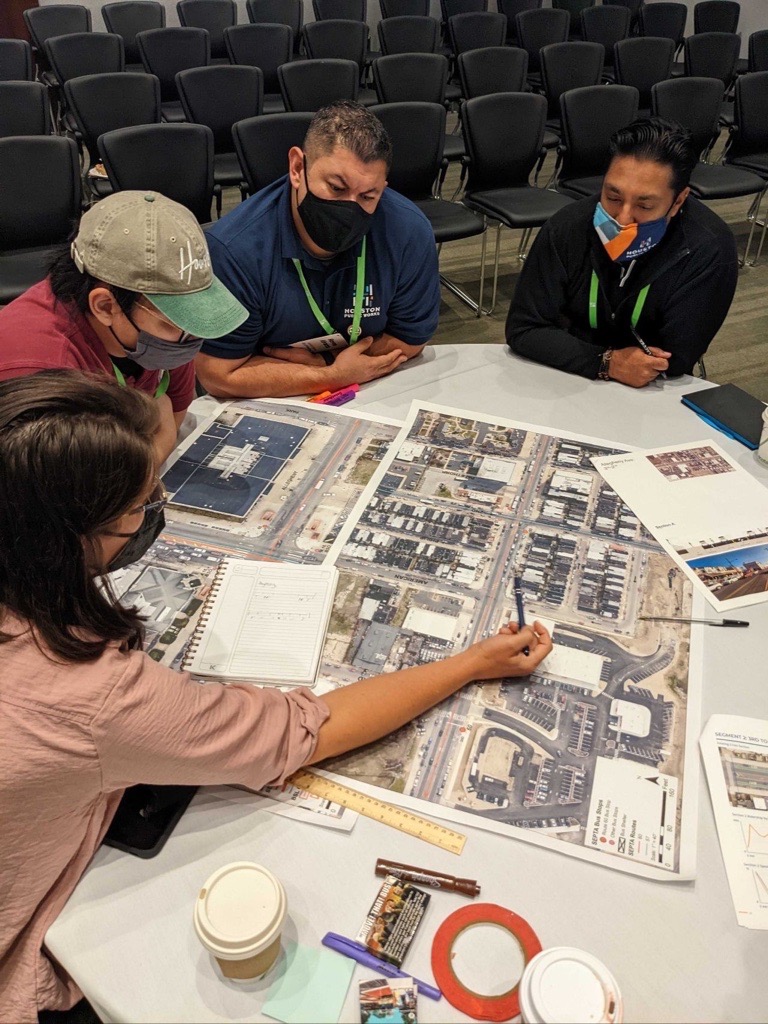 Partnership was also encouraged between local government bodies. The Move! That! Bus! workshop examined the need to break down city-level departmental silos when integrating transit onto streets.
Partnership was also encouraged between local government bodies. The Move! That! Bus! workshop examined the need to break down city-level departmental silos when integrating transit onto streets.
Typically, cities own their streets, while transit authorities own the buses that provide service to residents on those streets. This means that decisions that would ideally be made in unison-about space allocation on roadways, repaving projects, and placement of stops-are to be made separately. The workshop promoted a holistic, intersectional approach to designing transit, in which cities consider transit as part of their system and thus as foundational to how they design streets.
Photo credit: NACTO
In summarizing the conference’s emphasis on collaboration, a few key points emerge:
- One of NACTO’s primary objectives is to empower cities with the knowledge they need to implement effective and safe transportation design. The Designing Cities conference works toward this objective by bringing together city officials and transportation leaders from across North America to exchange knowledge.
- While conference programming emphasized the need to break down departmental silos, conference walkshops offered hands-on, practical opportunities for industry experts to share lessons learned from their work in the host cities. In the “Retrofitting Streets in Historic Highland Park” walkshop, Kittelson had the privilege to speak about our work implementing raised crosswalks in Boston.
- The goal of increasing communication across agencies is not to homogenize methods and perspectives. Instead of eliminating disagreement between agencies, these dialogues can use disagreement constructively, to inspire further innovations.
Design Succeeds When Safe, Accessible, and Modally Inclusive
The conference programming also reflected a growing consensus around which policies will guide safety decision-making in transportation. Between 2020 and 2021, roadway fatalities increased by almost 10% in the United States, with nearly 43,000 people killed in traffic crashes in 2021. Conference speakers emphasized three initiatives-Complete Streets, Vision Zero, and the Safe Systems approach-as different pieces of a solution to the country’s roadway safety issue.
The Complete Streets approach designs roadways to “support mobility for all users,” regardless of ability. Meanwhile, Vision Zero prioritizes the elimination of all traffic fatalities and serious injuries on our streets, while the Safe Systems approach acknowledges that humans make mistakes as they move from place to place and tasks roadway design with anticipating and managing these errors. These three complementary policies now form the ethical backbone of decision-making in the United States’ transportation design.
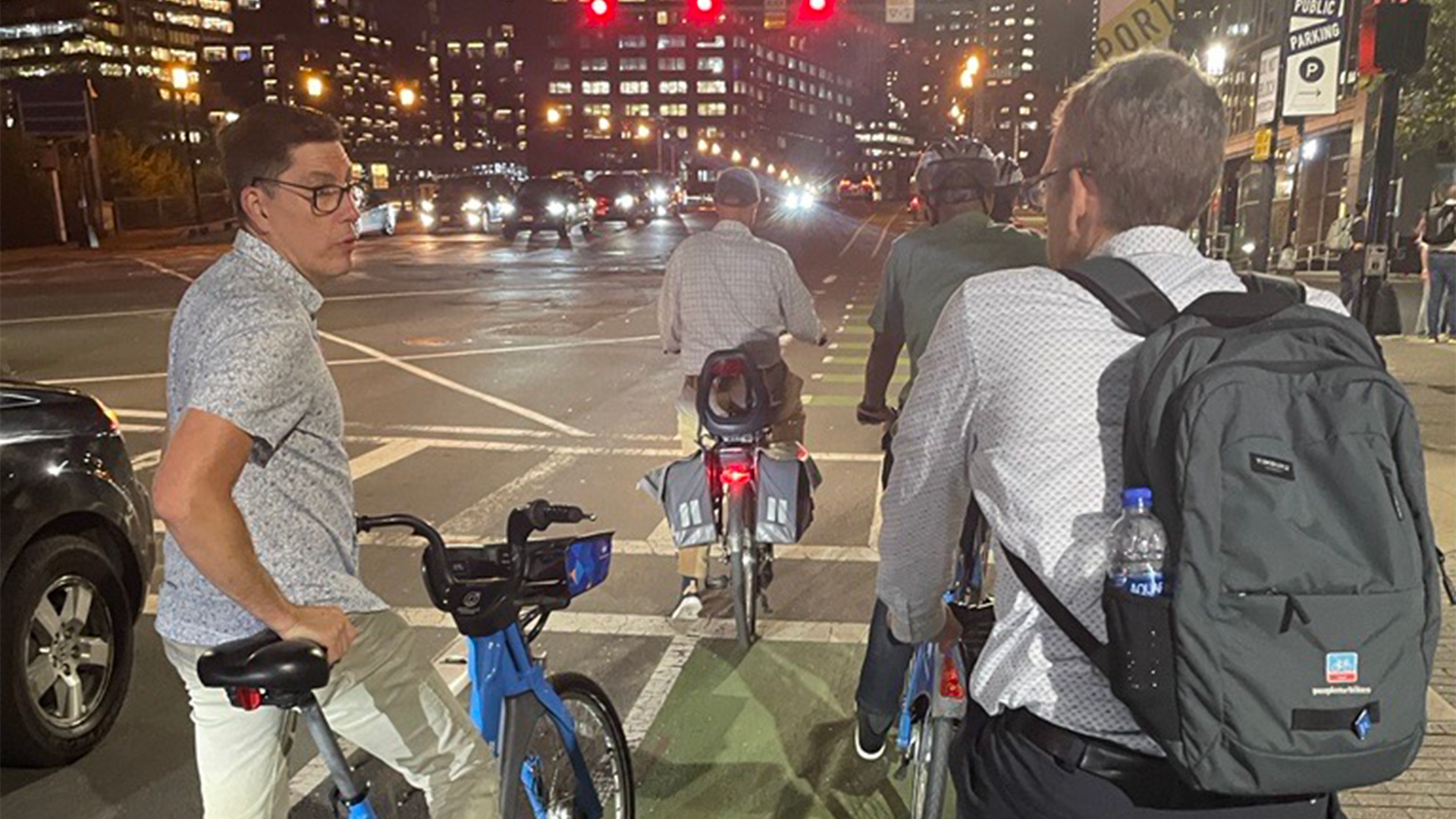
A complete street accounts for users of all abilities and modalities; above, conference attendees tour a roadway on bikes, made possible by the roadway's bicycle-lane infrastructure.
In a keynote address, FHWA Deputy Administrator Stephanie Pollock observed that the November 2021 passage of the Infrastructure Investment and Jobs Act (IIJA) marks the first time a piece of federal Congressional legislation has featured the term “Complete Streets.” Since the term’s appearance in the IIJA, FHWA has compiled a report, “Moving to a Complete Streets Design Model,” which clarifies what counts as a “complete” street. The IIJA also requires FHWA to develop a method for all DOTs to use when assessing vulnerable road user needs. Together, these new policies set the Complete Streets approach as the default one for any roadway project seeking the support of federal funding.
The federal government’s embrace of Complete Streets policy mirrors other movements by national organizations toward increasing multimodal infrastructure and user safety. In early 2022, the National Roadway Safety Strategy (NRSS) formally adopted the term “zero” for the first time, taking the first step toward the long-term goal of zero fatalities. Additionally, both the FHWA and NRSS have formally adopted the Safe Systems approach.
The shift toward these concepts isn’t occurring only on the national stage; state DOTs are embracing Complete Streets, as well. In 2021, Caltrans adopted a policy that requires all projects to provide connected and complete streets, instead of making it a design exception. On the other end of the country, MassDOT developed a program requiring cities and towns that seek state funding to have a Complete Streets policy, mirroring the federal requirement. In the six years since the program was implemented, more than 200 Massachusetts municipalities have created and adopted policies.
Some other observations and key takeaways:
- The growing momentum for these safety and mobility initiatives dovetails with the growing call for interdepartmental communication. USDOT recognized during the conference that implementing a Safe Systems approach to transportation networks will require collaboration and silo-busting within the organization. A new guide, “Improving Safety for Pedestrians and Bicyclists Accessing Transit,” coproduced by FHWA and the Federal Transit Administration, offers an example of what departments can accomplish when they work together.
- Ultimately, practitioners can only achieve these safety goals through thoughtful, data-driven design. We had the opportunity to speak at the conference about our work redesigning Sommerville’s Powder House Square rotary (pictured below). Using primarily inexpensive and easily implemented materials, we were quickly able to alter the configuration of the rotary and increase user safety. We reduced the number of motor vehicle lanes to one, decreased crossing distances for people walking, and added new facilities, like protected bicycle lanes, for people bicycling or taking transit.
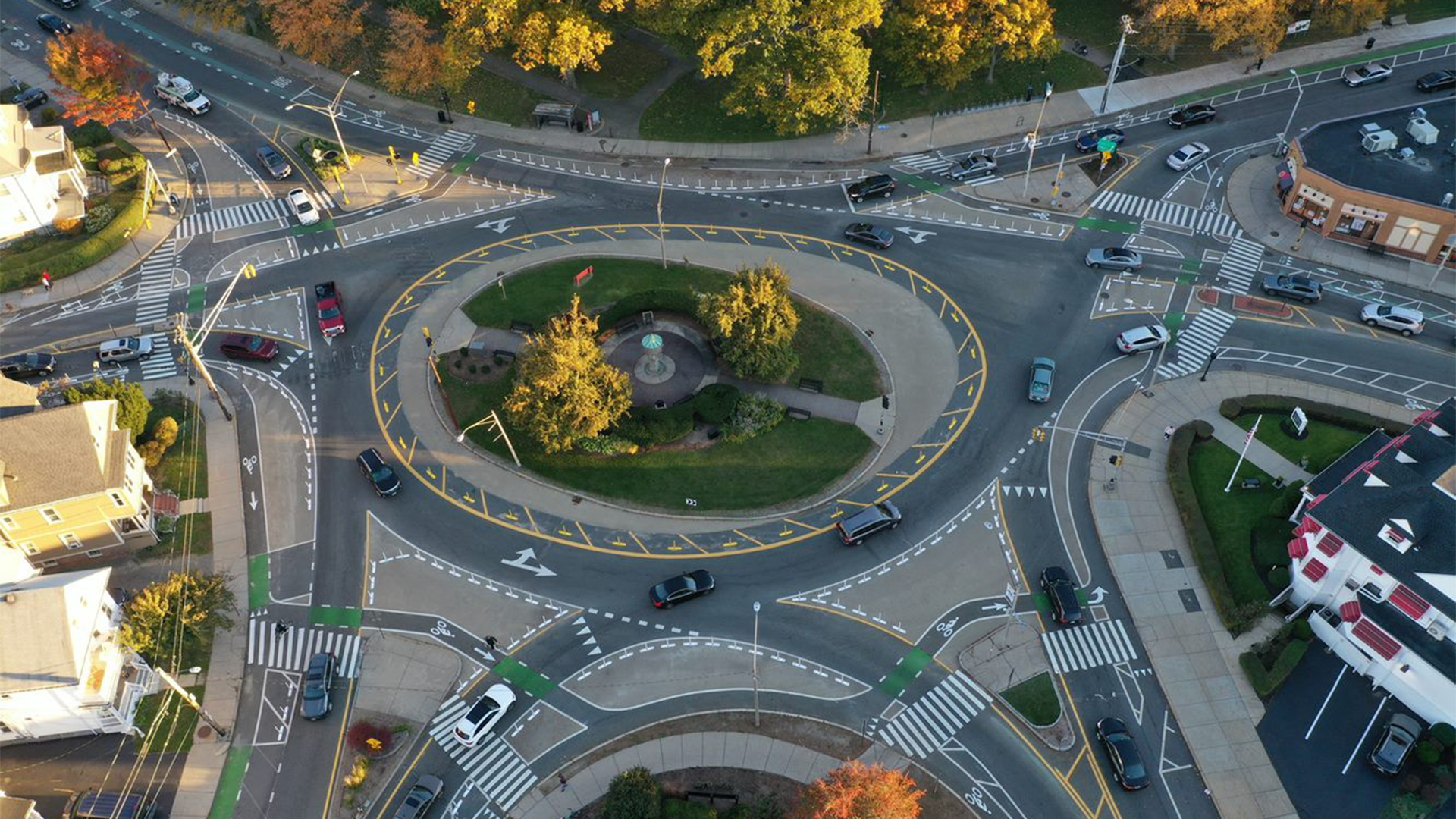
- There’s a wealth of published or forthcoming guidance on these safety and design initiatives, including:
- new 3R guidance that distinguishes between highways and urban arterials;
- the NCHRP 17-76 report, which provides guidance on setting speed limits; and
- the 7th edition of the AASHTO “Green Book,” which updates its framework to be more flexible, multimodal, and based on performance metrics.
Agency Operations Matter as Much as Design
A third theme at the conference pertained to the organizational and human-centric shifts that agencies can make to support their growth and innovation. Many speakers pointed out how, by re-envisioning the status quos of agency operations, directors can help to promote equity and sustainability in transportation design.
New York City Department of Transportation Commissioner Ydanis Rodriguez put the paradigm shift succinctly, saying, “We need to reimagine the use of public space-we’ve focused too long on serving the middle and upper classes, and we need to invest in working-class neighborhoods.”
One way agencies can foster this change in perspective is by thinking about equity as something that needs to be structurally integrated into an organization. In the “Transformation and Change: Charting a More Equitable Future for City DOTs” panel, Ryan Russo, the inaugural Director of Transportation at Oakland’s young DOT, spoke to the challenges and opportunities of building a transportation department from scratch. Russo sought to build equity into Oakland DOT’s foundations but risked alienating other more established City departments in doing so. To thread this needle, Russo opted not to issue a top decree for the department to center equity. Instead, Russo promoted equity within the department incrementally and organically, by creating an interdisciplinary culture of collaboration and experience-sharing.
The department intentionally paired newer practitioners who prioritized an equity lens in their work with veteran civil servants transferred in from other City positions. Each employee stood to benefit from working with the other: veteran public servants understood how civil departments operated, while equity-focused practitioners could identify and pursue projects commensurate with the reorganized department’s values.
On the theme of agency operations, a few additional takeaways stood out:
- While shifting agency focus can be a slow process, Russo points out that change can happen in little steps; in fact, less expensive, faster projects can be a great way to work through entrenched bureaucratic processes or minimal public will. By relying on an “operational toolbox,” which features time-tested and easily implemented measures like painted pedestrian zones and plastic bollards, an agency can make tactical and effective safety improvements in its jurisdiction.
- Just as safety can’t happen without cross-departmental communication, an agency can only shift its priorities when it has broad support. It’s particularly crucial to work closely with city administrators and other budgetary authorities to find alignment in centering equity and sustainability in transportation projects.
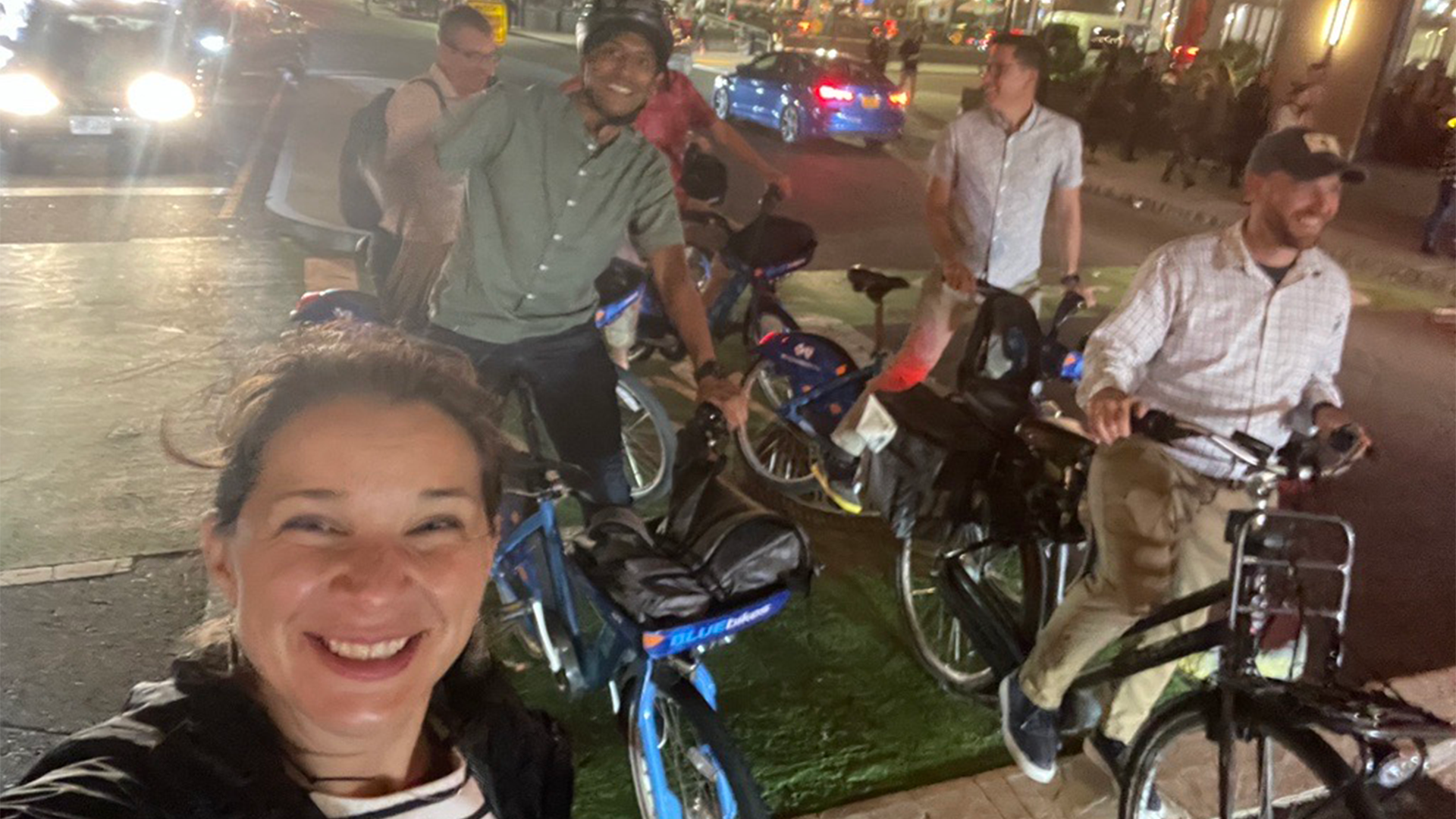
The Designing Cities conference is a productive-and fun!-opportunity for industry practitioners to reconnect.
Ultimately, NACTO’s 2022 Designing Cities reminded us that communities grow stronger when we come together to share our insights and questions. Feel free to reach out to us to discuss any of these ideas further!
